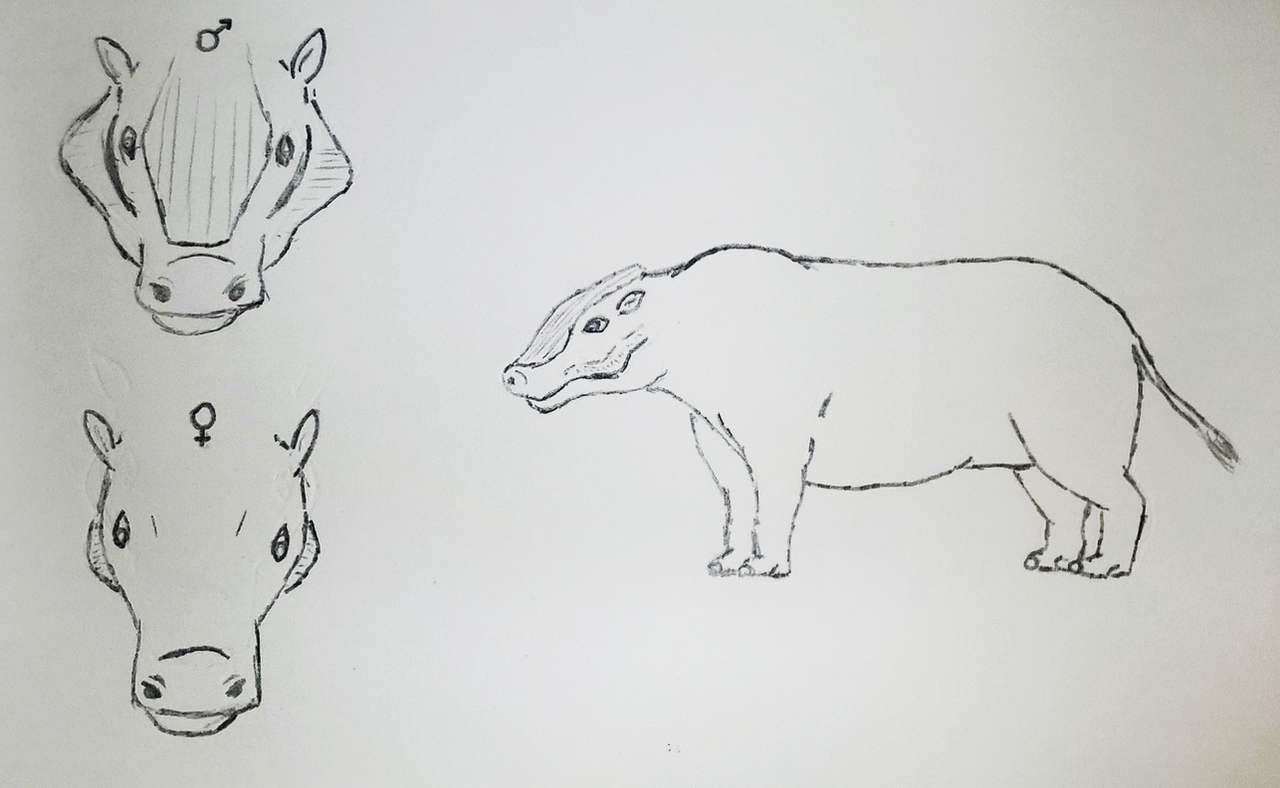HOME | DD
 orlenM — Speculative Evolution - Catoblepas
orlenM — Speculative Evolution - Catoblepas

#catoblepas #evolution #pig #rhinoceros #shield #spec #speculative #babirusa #hell #megafauna #speculativeevolution #gorgaias
Published: 2022-01-27 01:02:04 +0000 UTC; Views: 6676; Favourites: 35; Downloads: 1
Redirect to original
Description
As promised, here is a descendant of the Babirusa, the Catoblepas. It is from the (tentatively named) world of Gorgaias, from my speculative evolution project.The Babirusa and Saiga were the only two known ungulates that were introduced to Gorgaias, a planet seemingly seeded with Earth vertebrates often considered ugly/creepy/strange by many people. Initially with no predators, the Babirusa thrived in appropriate environments and began to spread around the world over millions of years, evolving into many different forms. Some remained omnivores, even becoming somewhat predatory like the extinct Entelodonts (I'll cover those next hopefully). But other descendants became herbivores. One such descendant is the Catoblepas.
Catoblepas are large, rhino-sized animals, males at least 2700 kg (3 tons) in weight and taller than most men at the shoulders. The legs of the Catoblepas are robust and stout, more like a hippos legs then a pigs, allowing it to support its weight. The skin is thick and hairless, as is typical for most megafaunal animals living in the same warmer environments this species inhabits. These animals are strictly herbivorous and resemble a buffalo more then a pig, as they now graze rather than root in soil. The stomach is still simple as in their suid ancestor, but their intestinal tract and cecum have grown to allow for efficient digestion of vegetation.
The most distinctive feature of the Catoblepas is its armament, which includes a cranial "shield" and cheek "horns" that flare from the side of its head. The cranial shield is a feature only grown by males (known as boars or bulls). It forms enamel, the same substance as a boars tusks. The Babirusa has continuously-growing tusks that protrude from the top of its muzzle, so this cranial shield probably is a modified form of that feature passed down to its descendant. The cranial shield is not actually a tooth, but just layer upon layer of thickened enamel; however under the skin where the shield grows there is a small tooth still imbedded in the flesh. The cheek horns are a feature that both males and females (sows) have, although the males cheekhorns are much bigger. As with the cranial shield, this forms from thickened enamel, but the upper canine teeth that form the ornament do actually protrude from the skin. The enamel continually thickens throughout the animals life, and older, dominant boars have particularly impressive sets. The shield and cheekbones are used by boars in contests for dominance; they arent used in defense against predators as the size and strength of the Catoblepas already protects them from almost any threat. It isn't certain why females grow small cheekhorns, but it may either be for species recognition or a holdover from when the smaller ancestors of the Catoblepas had similar growth that were actually used as defense against predators. Calves of both sexes lack these ornaments, but begin growing them at maturity, around 5 years old.
Related content
Comments: 4

👍: 0 ⏩: 0

👍: 0 ⏩: 0

👍: 1 ⏩: 1

👍: 1 ⏩: 0

























